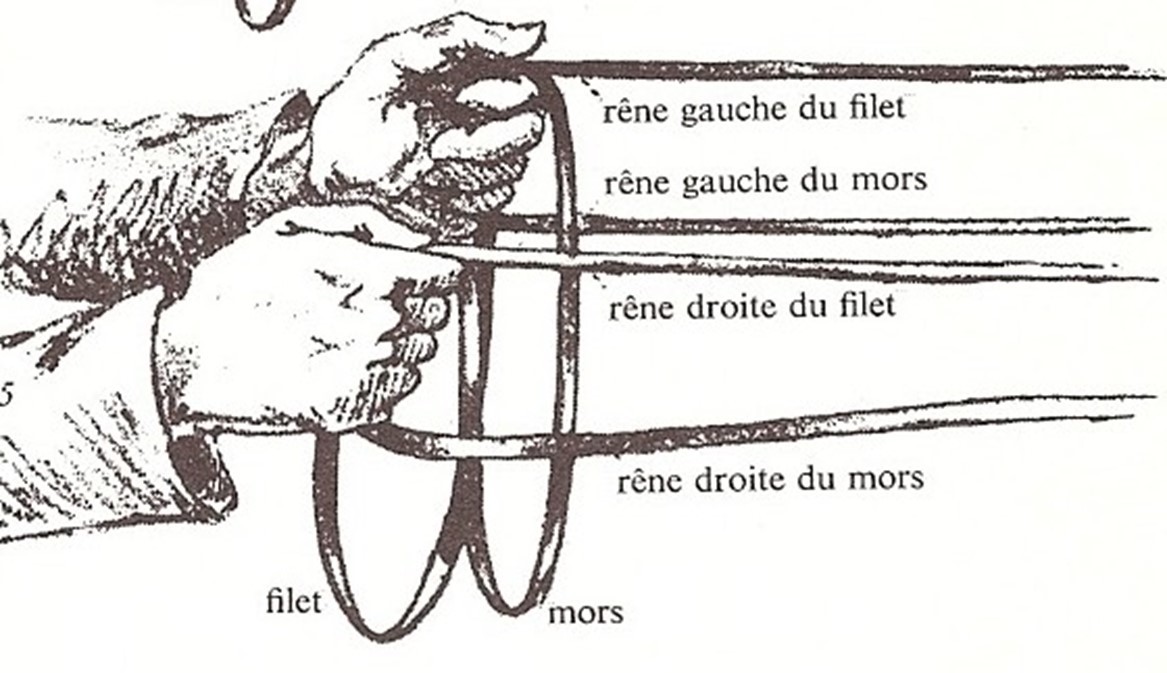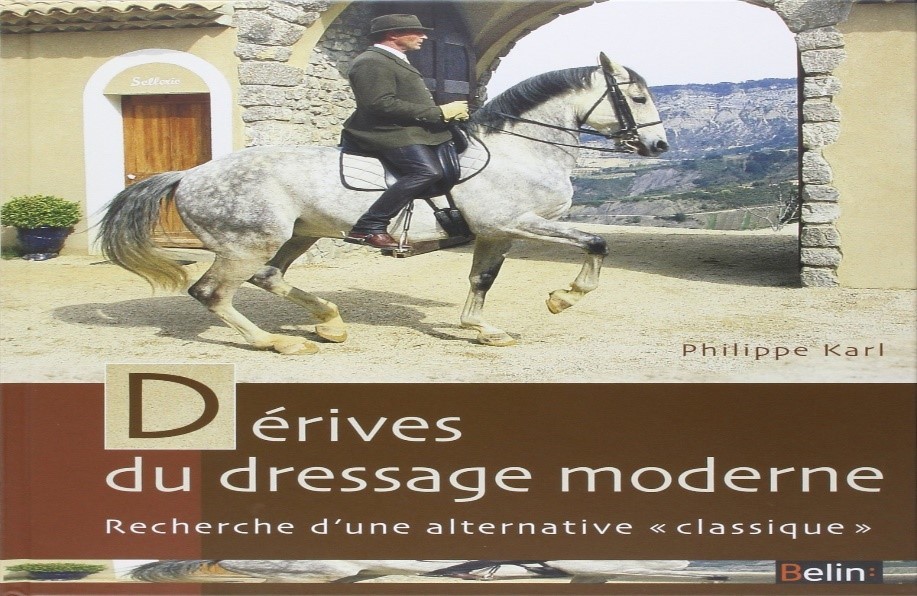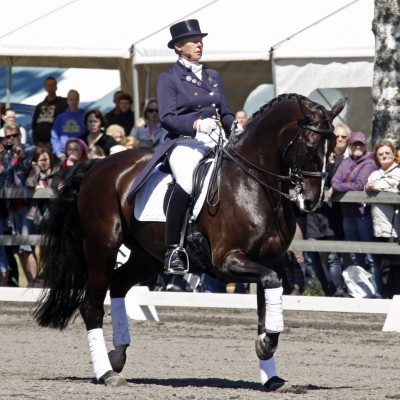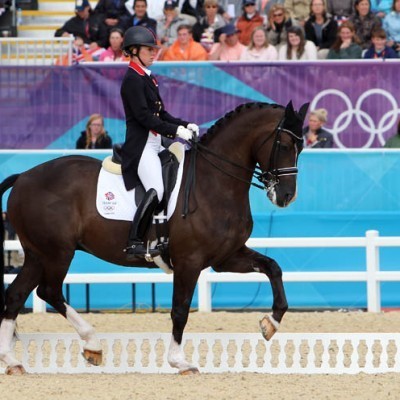Holding your reins "à la française"

Riders are generally unaware of this: in France, the usual way to hold the reins of the snaffle bridle and Weymouth bridle is described as the “German” hold-of-reins. Under these conditions, the reins of the snaffle bridle and Weymouth bridle intersect along the neck and join up in the hands of the rider, the first placed under the latter.

Several authors have argued against this way of holding the reins, considered illogical. One of the most famous was James Fillis (1834-1913) in his book Principles of dressage and of riding (1890). One of the most contemporary is Philippe Karl, former Ecuyer of the Cadre Noir, in his book Drifts of Modern Dressage (2006)..
What it is about exactly? Holding the reins “à la française” can be seen as holding the snaffle bridle reins higher than those of the Weymouth bridle. The reins, being of a different nature, do not intersect and remain parallel along the neck in the extension of the bits to which they correspond. In the hand, the Weymouth bridle rein runs below the pinky while the snaffle bridle rein runs over the index finger, thumb facing the sky. This approach is characterized by the clear distinction that results on the effects of the reins. These effects have a cause: they are directly related to the position of the bits in the horse’s mouth (the snaffle bit is higher than the Weymouth bit).
Their roles are different and even antagonistic. Like all masters teach since ancient times, the Weymouth bit has a “lowering effect” while the snaffle bit has an “upward effect”. It is therefore rational to clearly separate rein effects.
To summarize, the Weymouth bit provides bending of the neck (poll yielding playing on bars and tongue) while the snaffle bit provides jaw yielding (relaxation) and raising of the neck by elevating the head (actions on the tongue or on the corners of the mouth). This goal of “putting the horse on the bit”, which must be guided by the classical search for lightness, corresponds to the conformation of the horse: the elevation of the neck leads to the hips engaging under the body.
If Fillis described the way of holding the reins described above as hold-of-reins “à la française”, it is also called the “Fillis Hold” because he modernised and popularised it. In the old way of holding the reins “à la française” the two Weymouth bridle reins were in fact held in the left hand, rather low, and both snaffle bridle reins in the right hand, held higher up. The appellation “Fillis Hold”, consecrated by the great Parisian Ecuyer Armand Charpentier (1864-1949), is also widespread in Eastern European (Germany, Romania, Russia) and northern countries (Finland, Denmark). Riders of these countries remain, it’s a fact, under the influence of Fillis who was Ecuyer en chef at the St. Petersburg Cavalry Riding School from 1898 to 1910. Sergeï Filatov, Soviet rider who won the gold medal in dressage at the 1960 Olympics with his Akhal-Teke horse Absinthe, actually held his reins … “à la française”!

Closer to home, Nuno Oliveira has sometimes held the reins “à la française”, one might say as the “Fillis Hold”. Nowadays, the Finnish dressage champion Kyra Kyrklund recommends holding the reins the “Fillis” way (Dressage with Kyra, the Kyra Kyrklund training method, 2009). As for the reigning world champion in dressage, British Charlotte Dujardin, she also sets an example for holding the reins in this way. James Fillis, the most French of English Ecuyers would be delighted!


